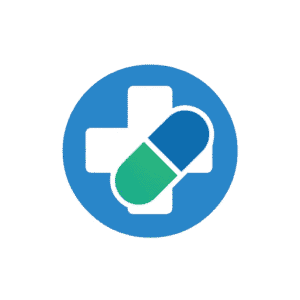1. What Is Miconazole?
Miconazole on face is becoming a trending topic among users dealing with fungal acne, tinea, or irritation on facial skin. Miconazole is an over-the-counter antifungal medication used to treat fungal infections like ringworm, athlete’s foot, and yeast-related rashes.
The cream form (typically 2% miconazole nitrate) is available without prescription under brands like Monistat, Micatin, and many generics.
2. Why People Use Miconazole on Face
Here’s why people apply miconazole on face despite limited official guidance:
-
Persistent breakouts that don’t respond to acne creams
-
Red patches near the mouth, nose, or jawline
-
Suspected fungal acne (Malassezia folliculitis)
-
Tinea faciei (facial ringworm)
-
Flaky areas that flare under humidity
Social media and skincare forums have popularized this remedy — but it’s important to separate trend from science.
 Is Miconazole Safe for Facial Skin?
Is Miconazole Safe for Facial Skin?
Answer: Yes — if used correctly and for short-term treatment
Dermatologists generally agree that miconazole on face is safe when:
-
Applied only to affected areas
-
Avoided near the eyes, mouth, or open wounds
-
Used in thin layers, once or twice daily
-
Limited to a treatment window of 5–7 days
⚠️ Caution: Facial skin is thin and highly sensitive. Misuse can lead to burning, peeling, or dermatitis.
4. Skin Conditions Treated with Miconazole on Face
| Condition | Can Miconazole Help? |
|---|---|
| Fungal Acne | ✅ Yes – suppresses Malassezia growth |
| Tinea Faciei (Facial Ringworm) | ✅ Yes – primary indication |
| Seborrheic Dermatitis | ⚠️ Sometimes – but not first-line |
| Candidiasis / Yeast Rash | ✅ Yes |
| Common Acne / Cystic Acne | ❌ No – not fungal-based |
Using miconazole on face should only be done when the root cause is fungal.
5. How to Apply Miconazole on Face Safely
-
Cleanse your face with a mild, non-medicated cleanser.
-
Pat dry gently — avoid scrubbing.
-
Squeeze a pea-sized amount of 2% miconazole cream.
-
Apply a thin layer only to affected areas.
-
Use once or twice daily.
-
Avoid layering with acids, exfoliants, or steroid creams.
-
Discontinue after 7 days or once rash clears.
Internal Link: How to Apply Miconazole Cream Effectively
6. Dermatologist Warnings and Advice
“Topical miconazole can treat fungal breakouts on the face if used conservatively. Avoid eye contact and prolonged use.”
– Dr. Meena Patel, Dermatology MD
“I recommend using it for fungal acne only after a doctor’s confirmation. The face requires precise diagnosis.”
– Dr. Andrew Kim, Skincare Specialist
7. Alternatives to Miconazole for Facial Use
| Product | Active Ingredient | Safer for Face? |
|---|---|---|
| Ketoconazole Cream | Ketoconazole | ✅ Yes (dermatologist preferred) |
| Zinc Pyrithione Cleanser | Pyrithione Zinc | ✅ Yes |
| Nizoral Shampoo (1%) | Ketoconazole | ✅ Yes (used as face mask) |
| Sulfur Soap (3–5%) | Sulfur | ✅ For fungal acne |
| Raw Honey or Probiotics | Natural | ✅ Very mild but slow |
8. Final Verdict
Using miconazole on face is medically acceptable when:
-
Used on fungal-related conditions
-
Applied for short periods only
-
Not mixed with other strong actives
-
Symptoms improve within a few days
If unsure whether your condition is fungal, get a medical diagnosis first. For persistent issues, dermatologist-recommended alternatives like ketoconazole are often safer.
9. Frequently Asked Questions (FAQs)
Q: Is it safe to use miconazole on face daily?
A: Yes, but only for 5–7 days and not more than twice daily.
Q: Can it be used for acne scars?
A: No. Miconazole treats fungal infections, not scars or pigmentation.
Q: Is miconazole better than clotrimazole for face?
A: They are similar, but clotrimazole is slightly milder for facial skin.
Q: Can I use miconazole cream on my face safely?
Yes, but use only a thin layer, avoid the eyes, and do not use for more than 2 weeks unless advised by a doctor.
Internal Link: Miconazole vs Clotrimazole
CTA Section
Want full guidance on how and where to use antifungal creams?
Explore More Application Guides
1 thought on “Miconazole on Face: Is It Safe and Effective? (2025 Dermatology Guide)”